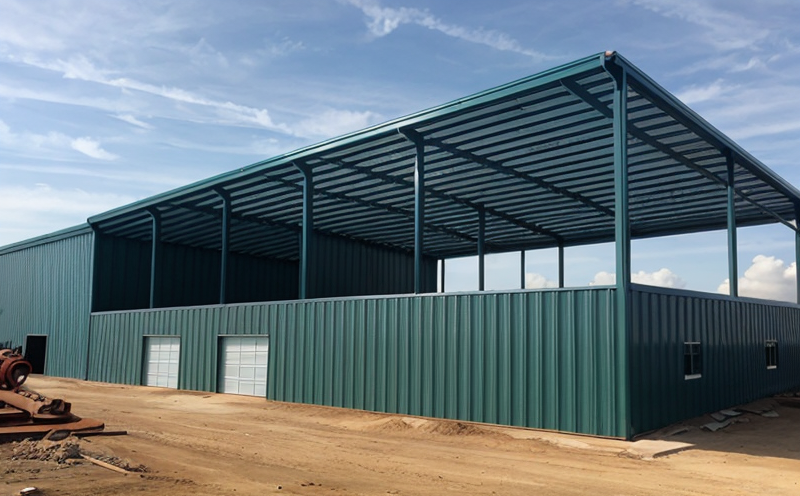IEC 60068-2-52 Salt Mist Corrosion Testing of IoT Materials
The IEC standard IEC 60068-2-52 specifies the method for determining the resistance to salt mist corrosion. This test is particularly crucial for evaluating materials and components used in smart home and IoT devices, which often operate in harsh environmental conditions.
The standard applies to a variety of electronic and electrical products where exposure to corrosive environments can lead to premature failure or reduced performance over time. In the context of smart homes and IoT devices, these tests ensure that materials used are durable and reliable under real-world conditions.
During testing, specimens are exposed to a salt mist atmosphere for specified durations at controlled temperatures. The test parameters include:
- Temperature: Typically 40°C ±2°C
- Relative Humidity: 95% ±3%
- Duration: Minimum of 168 hours (7 days)
- Test Solution: A solution containing sodium chloride, typically at a concentration of 5% by weight in water
The test setup involves placing the specimens in a chamber where they are exposed to salt mist. The duration and conditions can be adjusted based on the specific requirements of the materials being tested.
After exposure, the specimens are inspected for any signs of corrosion such as pitting, rusting, or changes in color. These visual inspections help determine the resistance of the material to corrosive environments. Additionally, dimensional measurements may be taken to assess any potential changes due to corrosion.
The results from these tests provide critical insights into the durability and reliability of materials used in smart home and IoT devices. This information is invaluable for quality managers and compliance officers who need to ensure that their products meet strict environmental standards.
For R&D engineers, this testing ensures that new materials are evaluated under real-world conditions before being incorporated into final designs. For procurement teams, it helps identify suppliers who provide materials capable of withstanding harsh environments without compromising performance or reliability.
The test also contributes to the broader goal of sustainability by ensuring that products have a longer operational life span, reducing waste and the need for frequent replacements. This aligns with the growing focus on sustainable practices in both consumer electronics and industrial applications.
Customer Impact and Satisfaction
The impact of IEC 60068-2-52 salt mist corrosion testing extends beyond just product durability; it also enhances customer satisfaction by ensuring that products perform consistently across diverse environments. By adhering to this international standard, manufacturers can gain a competitive edge in the market.
- Increased confidence in product performance under various conditions
- Promotion of trust between customers and brands
- Achievement of regulatory compliance reducing potential legal issues
- Better alignment with industry best practices leading to enhanced reputation
Customers benefit from products that are reliable, durable, and meet environmental standards. This not only enhances the brand image but also fosters long-term customer loyalty.
The testing process itself is rigorous and involves multiple stages of inspection and measurement. The results provide detailed reports that can be used to refine product designs and improve material selection. This continuous improvement cycle ensures that products evolve with changing environmental conditions, further enhancing customer satisfaction.
Environmental and Sustainability Contributions
The implementation of IEC 60068-2-52 salt mist corrosion testing contributes significantly to sustainability efforts by promoting the use of durable materials. This reduces the frequency of product replacements, thereby minimizing electronic waste.
By ensuring that IoT devices and other components are resistant to corrosive environments, this testing helps extend the operational life span of products. Longer-lived products lead to reduced resource consumption and energy usage throughout their lifecycle, aligning with broader sustainability goals in manufacturing and consumer electronics.
The standard also supports sustainable practices by encouraging the use of materials that can withstand harsh conditions without degrading significantly over time. This reduces the need for frequent maintenance or replacement, further contributing to environmental sustainability.
Moreover, compliance with this international standard helps manufacturers meet regulatory requirements related to environmental protection and product durability. By adhering to such standards, companies contribute positively to global efforts towards sustainable development.
Competitive Advantage and Market Impact
The rigorous testing regimen of IEC 60068-2-52 salt mist corrosion testing provides a competitive advantage by ensuring that products are robust enough to withstand harsh environmental conditions. This not only enhances product reliability but also sets a benchmark for quality.
Compliance with this international standard can differentiate a company’s offerings in the market, attracting environmentally-conscious consumers who value durability and sustainability. It positions companies as leaders in innovation and sustainable practices, enhancing their reputation among stakeholders.
This testing process is particularly valuable in smart home and IoT device sectors where products are often exposed to various environmental factors. By adhering to this standard, manufacturers can ensure that their products perform consistently across diverse environments, thereby gaining a competitive edge.
Furthermore, the detailed reports generated from these tests provide valuable data for continuous improvement. This iterative process allows companies to refine product designs and improve material selection, ultimately leading to better-performing products. Such advancements contribute to maintaining a strong market presence and fostering customer trust.





